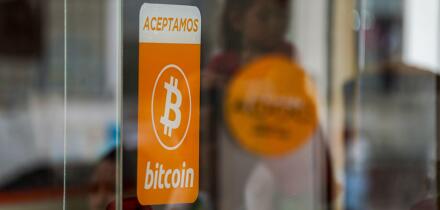What is exposure? It is one of the buzzwords of modern risk management, but in fact the word is used to describe a number of different variables. There is currently an accepted best way of measuring the exposure of a deal or a portfolio, but this fairly complex approach is only taken by a few sophisticated market players, with others lacking the trained personnel or computing power. Over the last decade, a consensus has slowly evolved with regard to what exposure is and how to measure it, but still too many small and medium-sized institutions remain in ignorance of facts and figures.
In the simplest terms, the exposure of a deal is a measure of the market risk of the deal. It depends upon the possible range of future values of the deal. Thus a deal which has a very high sensitivity to movements in underlying rates, like some option or barrier product, will have a higher exposure for the same notional amount than a simple swap.
There are three reasons for the measurement of exposure:
* To get a portfolio measure to determine overall risk on a
portfolio, and perhaps to allocate capital to cushion possible
future losses;
* To find exposures on a deal-by-deal basis, to discover which
deals or sections of the portfolio are the riskiest. These can
then be hedged or monitored; and
* To be able to decide whether to take on a deal using risk
criteria. Frequently, a total amount or exposure (credit line) is
allocated to each customer, based or credit grounds, and then
the exposures of each deal done with that customer gradually
eat up this exposure. Once the credit line is used up, no more
deals may be done with the customer.
So, how is deal and portfolio exposure calculated? Listed below--in descending order of complexity and accuracy--are some of the ways single deal exposure is calculated:
* % of notional for each deal, depending upon deal type;
* Exposure curve is calculated, and the peak of the curve
is the exposure; and
* Exposure curve is calculated or simulated for complex deals,
and the whole curve is considered in further analysis.
An exposure curve is a simple concept--it is just the range of possible future values of a deal. Consider an interest rate swap. It is composed of a fixed and a floating leg. The fixed leg will pay the same rate over the life of the deal, while the floating leg will move with underlying rates. At the start of the deal, both legs have the same value but opposite sign, so the range of possible values is close to zero. As we contemplate the future of the deal, however, we need to think what rates may do. If the floating rate moves a long way from the fixed rate, the deal may have a large positive or negative value. We can simulate the possible future interest rates, using a good model, and thus discover the future range of values of the deal. Usually for exposure purposes we will do this at a 2 standard deviation level, or 95%, so we can say the most extreme value of the deal at a point in the future is less than X with a 95% probability. We will end up, for an interest rate swap, with a figure like figure 1.
Deal exposures are added to find portfolio exposure. Again, there are different degrees of sophistication in the combination of deal exposures, detailed below:
* Adding the peaks of all the exposure curves, regardless of the
time in the future at which they occur, and calling the sum the
portfolio exposure;
* Adding the peaks of the curves, but allowing for offsetting
deals with a single counterparty, and accounting for mutually
exclusive exposures. The latter arises when two deals respond
in opposite ways for the same change in rates--there is no way
that they can both go horribly wrong at the same time;
*Adding exposures in different time 'buckets', so that an
exposure which occurs three years in the future is not added to
one which occurs 10 years in the future, for example. A
composite exposure curve will result; and
* Adding exposures over the portfolio, allowing for correlations
between rates which will reduce the overall exposure.
In effect, to find the true exposure of a group of deals, we need to simulate future range of values of the whole portfolio. This is approximated by adding individual deal exposures as intelligently as possible.
A point which is essential to grasp is that improving calculation methods inevitably reduces the portfolio exposure. Crude exposure addition methods inevitably result in overestimates of the total exposure, because any uncertainty results in conservative approximations. There is no doubt that accurate exposure calculations take time and effort, but for many institutions they will yield unexpected benefits.
This week's Learning Curve was written by Jessica Jamesfrom First Chicago NBD's strategic risk management group in London.





